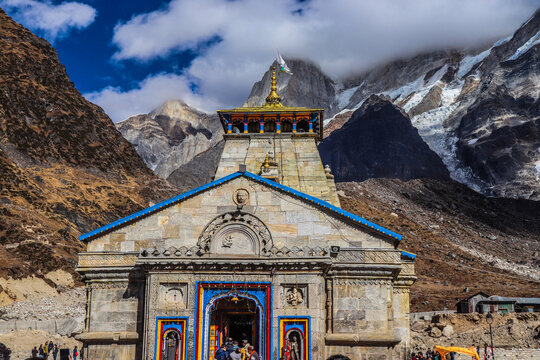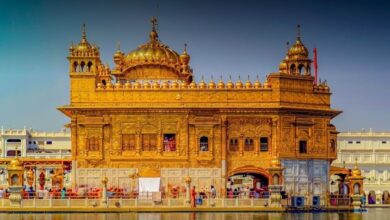
How to Plan Badrinath Kedarnath Yatra Package
Embarking on a pilgrimage to Badrinath and Kedarnath, two revered Hindu sites nestled in the picturesque Himalayas, is a journey of profound significance and spiritual awakening. Planning such a pilgrimage requires careful consideration and meticulous attention to detail. This guide aims to provide you with a comprehensive roadmap for planning a memorable Badrinath Kedarnath yatra package, encompassing not only the practical aspects but also the cultural, religious, and environmental dimensions of this sacred journey.
Delving into the Spiritual Significance
Badrinath: Situated in the tranquil Chamoli district of Uttarakhand, Badrinath stands as the abode of Lord Vishnu, one of the principal deities in Hinduism. It is revered as one of the Char Dham pilgrimage sites, believed to cleanse the soul and bestow salvation upon devotees.
Kedarnath: Nestled in the rugged terrain of Rudraprayag district, Kedarnath holds sway as the abode of Lord Shiva, the supreme deity of Shaivism. It is one of the twelve Jyotirlingas and is imbued with the divine energy believed to liberate devotees from the cycle of birth and death.
Timing Your Pilgrimage
- The yatra season typically spans from April to November, with peak seasons in May-June and September–October.
- Avoid the monsoon months of July to September due to heavy rainfall and the heightened risk of landslides, which may disrupt travel plans and compromise safety.
- Consider visiting during the off-peak season for a more serene and contemplative experience, albeit with colder temperatures and limited facilities.
Crafting Your Itinerary
- Tailor your itinerary based on the duration of your pilgrimage package, allowing ample time for travel, darshan (worship), and spiritual contemplation.
- Include additional stops at nearby sacred sites such as Yamunotri, Gangotri, and Hemkund Sahib to enrich your pilgrimage experience and deepen your spiritual connection.
- Strike a balance between structured activities and moments of solitude to fully immerse yourself in the spiritual ambiance of the Himalayan landscape.
Securing Accommodation and Transportation
- Book accommodations well in advance, especially during peak seasons, to ensure availability and secure favorable rates. Options range from simple guesthouses to upscale hotels catering to diverse budgets and preferences.
- Explore yatra packages offered by reputable travel agencies, which often include transportation, accommodation, meals, and guided tours, thereby streamlining logistics and enhancing convenience.
- Alternatively, opt for self-drive or public transport options, factoring in considerations such as road conditions, accessibility, and travel time to maximize flexibility and autonomy.
Essential Packing Tips
- Pack strategically, considering the mountainous terrain and fluctuating weather conditions prevalent in the region. Layered clothing, sturdy footwear, and weatherproof gear are indispensable.
- Equip yourself with essentials such as sunscreen, sunglasses, hats, umbrellas, and a first aid kit to mitigate potential challenges and ensure comfort and safety throughout your journey.
- Carry all requisite documents, including identification proofs, yatra permits, and travel insurance, in a secure and accessible manner to facilitate hassle-free travel and accommodation arrangements.
Prioritizing Health and Safety
- Prioritize your health and well-being by consulting with a healthcare professional before embarking on the pilgrimage, especially if you have pre-existing medical conditions or altitude-related concerns.
- Stay hydrated, maintain a balanced diet, and observe dietary restrictions as advised by healthcare providers to sustain energy levels and promote physical resilience during the journey.
- Exercise caution while traversing mountainous terrain, adhering to safety guidelines, and heeding the counsel of experienced guides to mitigate risks and ensure a safe and fulfilling pilgrimage experience.
Embracing Cultural and Religious Etiquette
- Approach the pilgrimage with reverence and humility, honoring the sanctity of the sacred sites and respecting local customs, traditions, and religious practices.
- Adhere to prescribed dress codes and behavioral norms within temple precincts, observing silence, refraining from photography in restricted areas, and participating respectfully in rituals and ceremonies.
- Seek guidance from knowledgeable priests, spiritual mentors, or local guides to gain deeper insights into the significance of rituals, legends, and spiritual teachings associated with Badrinath and Kedarnath.
Budgeting Wisely
- Establish a realistic budget encompassing expenditures such as accommodation, transportation, meals, entry fees, donations, and miscellaneous expenses, factoring in contingencies and unforeseen circumstances.
- Explore cost-effective options such as budget accommodations, public transportation, and self-catering meals to optimize resources and stretch your budget without compromising on the quality of your pilgrimage experience.
- Exercise prudence and moderation in spending, prioritizing investments that align with your spiritual objectives and enhance the meaningfulness and impact of your pilgrimage journey.
Championing Environmental Stewardship
- Cultivate an ethos of environmental stewardship and responsible tourism by minimizing waste generation, conserving resources, and adopting eco-friendly practices throughout your pilgrimage.
- Refrain from littering or disposing of waste indiscriminately, utilizing designated bins and recycling facilities to maintain cleanliness and preserve the pristine beauty of the Himalayan landscape.
- Foster a deeper connection with nature and wildlife by treading lightly, respecting natural habitats, and refraining from behaviors that may disrupt or harm the delicate ecosystem of the region.
Conclusion
Embarking on a Badrinath Kedarnath yatra is not solely a journey of physical pilgrimage; rather, it represents a profound quest for spiritual renewal, enlightenment, and transcendence. Moreover, by meticulously planning and conscientiously executing your pilgrimage package, guided by the principles of reverence, humility, and environmental stewardship, you can embark on a transformative odyssey that enriches your soul, deepens your faith, and fosters a lasting connection with the divine essence of the Himalayas. May your pilgrimage be blessed with grace, illumination, and divine blessings, illuminating the path to inner peace, harmony, and spiritual fulfillment.





